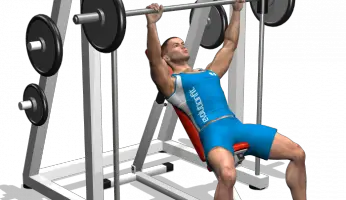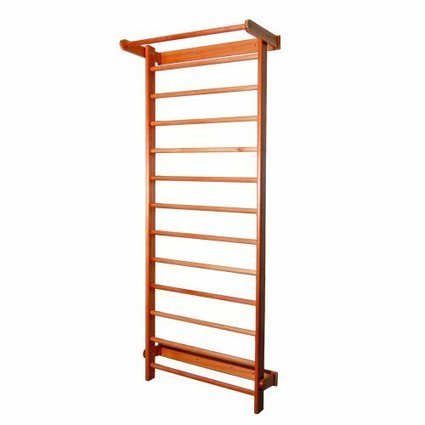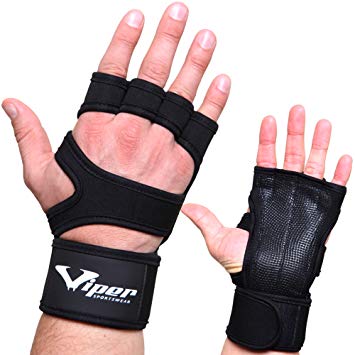Snatch Exercise – When, Why & How to Do This Exercise
The Snatch Pull is an Olympic movement that forms a core part of a serious Olympic weightlifter routine. It provides the athlete with the opportunity to vastly improve speed, power and to practice having just the right body positioning on the Olympic lifts.
The Snatch Pull is also showing up more and more frequently in snatch pull CrossFit WODs. This is a great functional fitness move that more people need to know about and adding to their basic snatch exercise power routine. In this article, we go in-depth on the snatch exercise. We’ll discover precisely how to do it, why we should do it and how we can pull the max weight on it.
Snatch Pull Benefits
The snatch pull was designed as an ancillary movement to the snatch exercise. The snatch exercise’s fundamental purpose is to help you to develop speed and height on the snatch. Working in the snatch exercise pull will help a lifter to become more rigid, stable and secure under the bar. An Olympic weightlifting athlete who has trained with the snatch exercise will be in a much better position in the receiving position. The exercise also allows a person to learn better bar mechanics and positioning during the various parts of the snatch.
Snatch Pull Technique Guide
- Position a loaded Olympic barbell in front of you.
- To determine the width of your grip, take hold of a PVC pipe, and hold one hand parallel to the floor, with the other hand straight above your head. This will give you a 45-degree angle on the PVC pipe and a 90-degree angle on your arms. Now lower the pipe to the pubic area and project your hands down to the bar. That is your snatch grip.
- Squat with your feet hip-width apart under the bar. Grip the bar with a firm overhand grip. Keep the arms straight.
- Raise the bar above your knees, pushing in with your hips while driving up hard with your legs into the floor to give the weight momentum. As the bar comes up off the floor, shift your weight back on your heels. Be sure to push up off the balls of your feet. Move your shoulders back to a position above the bar.
- Accelerate the bar with rapid hip and leg extension. The bar should be kept close to the body at all times. It should actually make contact with the hips as it passes them. Do not pull with your arms.
- Shrug up slightly with the shoulders as the bar comes up to the shoulder level. Do not pull with the arms. At this point, your body should be fully extended and you should be leaning back slightly. The bar should come up to chest level.
- Return the bar to the floor and move into your next rep. When lowering the bar, keep it close to your body and under control. Bend your knees as you lower the bar to your thighs.
This is an explosive snatch exercise that can potentially damage your lower back if done improperly. Be sure to keep your back flat and tight at all times
Persistent Snatch Pull Errors
Even though it is a pretty basic snatch exercise move, there are still a number of fundamental errors that can bring you to grief on this exercise. Here are the top 5 errors.
Inconsistent Grip Width

Your snatch grip width should be just the same as your normal snatch exercise width grip. If it isn’t, or if it doesn’t stay constant, your form will be compromised. Follow the guidelines above to get it right every time.
Hips or Pelvis Lifting

It is imperative that the hips and pelvis rise together. For many people, the hips and hamstrings take the brunt of the action at the beginning of the snatch exercise. When the hips drive upward, the shoulders should go up at the same time.
Getting the snatch exercise wrong at this stage will probably mean that you have to overcompensate with rapid back extension. If you find it difficult to get this part of the lift right, it probably means that you have to lower the weight on the bar.
Shoulders Falling Back
While some trainers have the tendency to lift the hips too quickly, others have the reverse problem; the shoulders come up too quickly for the hips. Often this will require you to abnormally pull the bar out and around the shins and knees. This can have the follow on effect of pulling the mass of the body forward. This can cause the person to not be able to complete the snatch pull.

To make sure this doesn’t happen, knowing how to do a snatch is very important. Keep the shoulders over the barbell and make sure that you are driving into the ground with the entire foot.
Not Aggressive Enough

This is an explosive snatch exercise that requires a bit of naked aggression. You need to pull through with maximum effort and energy. There is no such thing as going through the motions on this snatch exercise, no matter how fatigued you are.
How Heavy Should You Go?
Most of the commons errors seen in the snatch pull are the result of people using a too heavyweight during the first few months of this exercise, as they are perfecting the form. Keep in mind that the key objective of this move is not raw strength, but the combination of speed and force to deliver applied power.
As a gauge of the sort of badge, you should be using in the snatch pull, train with between 70 and 100% of your snatch maximum weight. Generally, your weight on the snatch exercise pull will not be as heavy as that on the clean pull, because, with the clean pull you do not have to bring the bar up as high as you do in the snatch pull.
Snatch Pull Variations
Power in your legs is critical for the proper execution of both the snatch and its derivative, the snatch pull. If your thighs are not strong enough, you will probably find that your hips are likely to rise too early, precipitating a domino effect of problems.
The following 5 exercises will help you to drill down your leg strength on the snatch exercise pull.
1. Triphasic Pills

The Triphasic snatch pull divides the exercise into three components – the eccentric, concentric and isometric portions of the lift. The idea of this is to minimize your force, especially on the concentric (lifting part) of the exercise. A key concentric part of the snatch exercise is the initial lift from the floor.
To perform the Triphasic snatch exercise, begin with an exclusive fast concentric pull. Then immediately go into the eccentric (lowering) part, taking 5 seconds to descend. The change of direction, which occurs twice (at the top and bottom of the movement) is the isometric part. This should be as short as possible.
2. Isometric Pulls

The Isometric snatch pull has you performing the standard snatch pull, but taking an exaggerated pause at a predetermined portion of the exercise. Usually, these isometric pauses occur at parts of the lift that cause positional strength limitations. The additional time under tension involves a greater level of neural recruitment and will increase muscle mass and strength.
3. Riser Pulls

This one is identical to a standard snatch pull, except that you perform the exercise while standing on a riser board. This may be a timber platform or a 45-pound weight plate. The width of the roster should be between one and four inches (start with the smaller height).
The Riser Pull requires that you pull the bar an extra distance from the floor. This involves a greater degree of knee flexion, which means that you will have to recruit more quad and hamstring muscle to complete the action.
Make sure that the riser height is not too high. Anything over four inches will compromise your natural pulling mechanics.
4. Floating Pulls

The Floating Snatch Pull is a continuous snatch pull that keeps you moving all the time. That is because you do not put the weight down on the floor between repetitions. Rather, it ‘floats’ just off the ground before you move into the next rep. This is a great way to increase your time under tension, which leads to greater muscle mass, increased strength, and improved bar patterning.
5. Eccentric Pulls

The Eccentric Snatch Pull is perhaps the hardest variation of all. It involves performing the eccentric (lowering) part of the exercise very slowly. You should take 5 seconds to descend through this phase of the movement. 3 of those 5 seconds should have the bar below the level of your knees.
After doing your rep, drop the bar to the floor. Then position it in the top position of the snatch pulls as you go into the next 5-second eccentric descent.
Eccentric snatch pulls are a very effective way to improve strength and, despite the fact that you are doing it very slowly, explosiveness.
Conclusion
The snatch exercise is a foundational power move that will make you more explosive, powerful and more functionally fit. While it is specifically designed to improve your performance in the snatch, it is a great move for overall gains in all areas.











